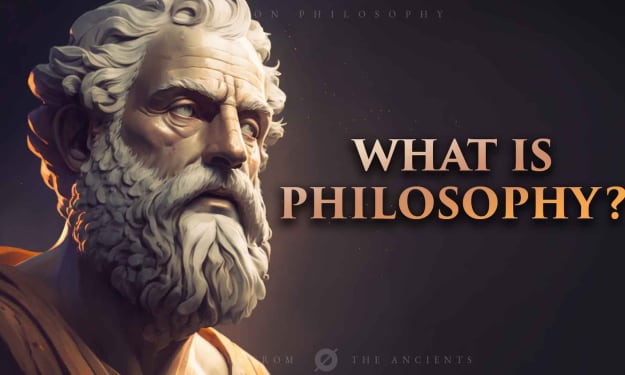Digital Natives v Digital Migrants: A study
an academic essay

Preamble:
This essay discusses digital literacy, with focus on the different groups of digital literacy. Digital literacy is the ability of an individual to discover, evaluate, understand and communicate information through digital platforms. There are two groups of digital literates, whose year of birth affect their ability to grasp digital knowledge and skills. They are, digital natives and digital migrants. Both are terms coined by Marc Prensky in his 2011 article. I am going to discuss about them in this essay.
Digital Natives:
In his 2011 article, Marc Prensky argued that a generational divide existed between those who were born or grew up after the technology boom in the 1980s, and those who were born or grew up before that. He coined the term “digital natives” and defined them as those who were “born digital” and are “native speakers” of the digital language.
He went further to assert that this divide causes a conflict in the workplace, where digital migrants may struggle in adapting to changing technology and hence, lose work opportunities to digital natives. Also, digital migrants may struggle in education as a teacher, where their “outdated language (pre-digital age)” may not be suitable to teach a group that’s speaks an entirely new language.
It can be argued that his idea to use the word “native” to label this group is fitting, given its layman meaning. A native speaker of a language will instinctively understand aspects of their own language without being explicitly taught, whilst a speaker who is learning it as a second language at a later stage in life will struggle. These terms have been embraced by many as ways to identify learning differences between age groups.
In terms of technology, this means that digital natives may easily and quickly grasp digital concepts and be able to evaluate and utilize its tools. This is highly probable given that the digital world is all they’ve ever known. The generations considered natives are millennials, Generation Z and Generation Alpha.
Digital Migrants:
Also, in that 2011 article by Marc Prensky, he described digital migrants as those “who were not born into the digital world but have, at some later point in their lives, become fascinated by and adopted many or most aspects of the new technology”. This is a broad description that tries to cover the essential characteristics of a digital migrant.
However, simply put, digital migrant can also be referred to the group of people born before 1980 or the technological advancements of the 1980s. This group may take more time to understand, evaluate and adopt the new digital tools available in the world. They were born into a world without digital presence so have had to adapt and transition between an offline life and life with evolving digital technology. They are made up of Generation X, boomers and generations before that.
Differences between digital natives and digital migrants:
Whilst there maybe few similarities between some of the members of each group, there are far more differences between the two groups. Some of them are:
a. Where digital migrants would prefer to talk about an issue in person, digital natives would prefer to discuss it over an email or instant messaging.
b. When learning a new digital concept, digital natives will grasp it quickly whilst digital migrants will usually require more logical, step-by-step instructions.
c. Because the digital world is all they’ve known, digital natives can naturally multi-task without struggle, with their attention captured by many things. Meanwhile, digital migrants prefer to focus on one task at a time and give it their full attention.
d. When sourcing for news, digital migrants may use traditional media such as newspapers and television, whilst digital natives are more likely to use social media and internet news sites.
Misconceptions:
Like every other information or data in the world, the concept of both groups should be put into context and must not be generalized. It should not be used as a blanket label on people but as a tool to judge and better understand the learning differences in some people.
Some of the misconceptions that would be generated when this data is taken without context are:
a. Age is the only factor:
There are other factors in addition to age that can be used to ascertain someone’s digital citizenship. E.g. a young person from low-income background with little to no access to technology is unlikely to have same grasp of digital tools as an older rich person who has invested in new technology.
b. Migrants are inferior to natives:
Their differences should not be used to say that natives are superior to migrants. Instead, their differences represent challenges and opportunities. E.g. digital migrants are less likely to be using their phones during a class or training session.
c. Migrants can’t be taught new tech:
Rather than seeing migrant’s slow grasp of learning as a handicap, it should inform our approach on how we create and introduce new technology.
d. Exposure is the same as mastery:
Just because the natives have been exposed to technology more than the migrants doesn’t guarantee that they’ve mastered it. As mastery of a thing requires discipline and commitment, attributes one could argue are found more in migrants than natives.
New Approach:
Recently, a new framework to understanding the differences in technology engagement has been proposed by David White and Alison Le Cornu. They assert that new terms, namely, Digital Residents and Digital Visitors would be more suitable for the categories.
They defined digital residents as people who see the web as a place. They spend time with others online, join digital communities and use it to form relationships and express opinions. Whilst digital visitors see the web as an untidy garden tool shed. They have a task and go into the shed to select the necessary tool to attain their goal without staying to explore other things.
Conclusion:
With the challenges presented by the introduction of new technology in the world, like global warming, invasion of privacy etc, the world needs the attributes of both groups in order to fix and advance the welfare of the world. A balanced approach to issues and solutions to the world. By working together, digital natives and digital migrants can leverage their strengths to create a more technologically advanced and inclusive society.
About the Creator
Ugochukwu Udorji
It is my dream to tell great stories. Stories of our past & culture, stories about my dreams, your dreams, the dreams and desires of my generation for Africa. Dreams and desires so pure, so impossible, so immoral but it doesn’t matter...






Comments
There are no comments for this story
Be the first to respond and start the conversation.